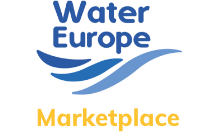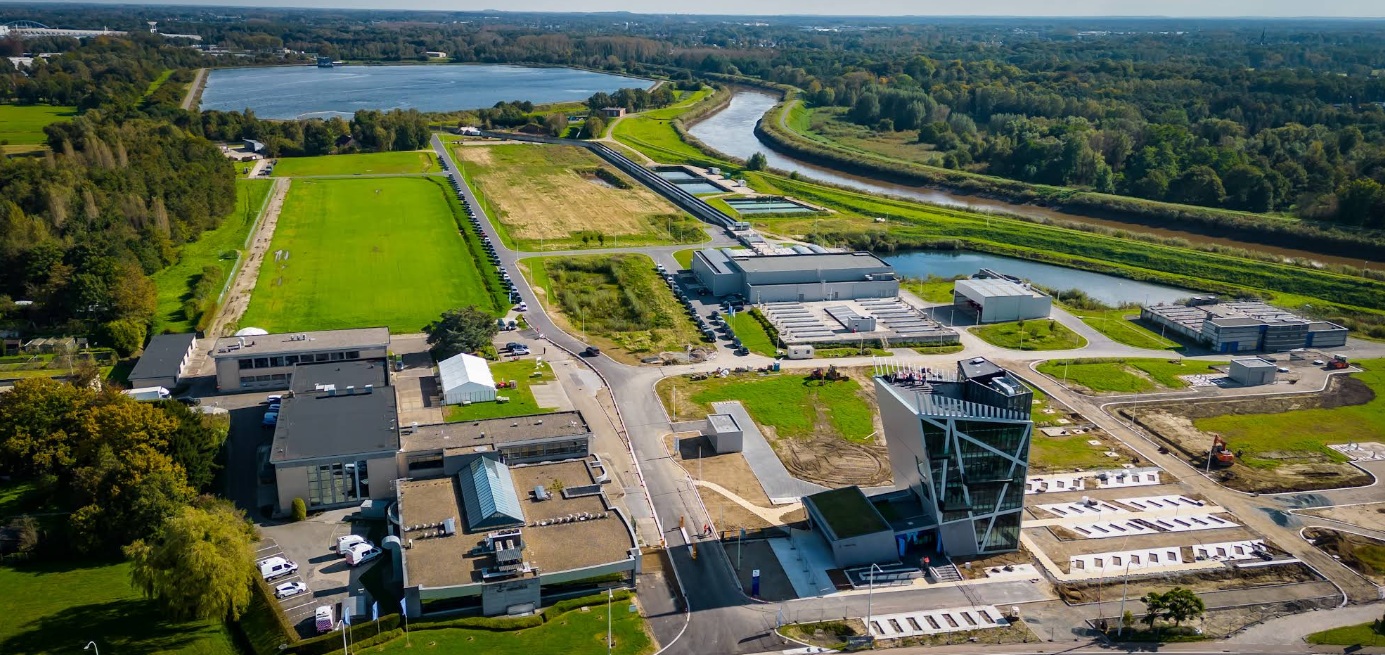Description
The Water-Link (Belgium) Case Study focuses on enhancing water resource management in the Antwerp region, where Water-Link is a key producer of drinking water. The study addresses challenges related to climate change, water scarcity, and salinization affecting the Albert Canal, a critical freshwater source for drinking water, industrial operations, and transportation. To ensure sustainable water availability, the project implemented a real-time smart water monitoring and management system using Conductivity-Temperature-Depth (CTD) sensors deployed throughout the Albert Canal, Antwerp Port, and upstream areas. The collected data is processed through an operational decision-support model, allowing stakeholders to optimize water intake, pumping operations, and resource allocation. Additionally, a visualization and early-warning system helps anticipate salinity variations and climate-induced risks, ensuring a more resilient and adaptive water management strategy.
Applied technology
Best practices
- Site Selection:
Selecting monitoring locations based on environmental significance and practical installation constraints ensures the effectiveness and efficiency of the sensor network. - Robust Sensor Installation:
Installing robust CTD sensors and communication devices with protective measures helps minimize damage from environmental factors and maintains continuous data collection. - Reliable Data Flow Architecture:
Establishing a robust data flow and IT architecture, including LoRA communication for seamless data transmission, ensures reliable real-time and historical data access. - Preventive and Corrective Maintenance:
Implementing regular preventive maintenance, such as cleaning sensors to prevent biofouling, and conducting corrective actions promptly ensures high-quality data collection and sensor performance. - Continuous Monitoring and Data Quality Assurance:
Utilizing real-time monitoring dashboards to continuously track sensor performance and data quality ensures the reliability of collected data and supports informed decision-making. - Stakeholder Collaboration:
Maintaining continuous communication and collaboration with stakeholders, such as water authorities and industries, ensures that the tools and technologies meet their needs and support efficient water management. - Integration of Real-Time Data with Operational Models:
Combining real-time sensor data with operational models enhances the accuracy and reliability of salinity forecasting and scenario analysis, improving overall water management strategies.
Technology performance and best practices
The purpose of the technological implementation in this case study was purely monitoring of water quality over a large network (rather than a chemical/physical processing of water), therefore the relevant qualitative findings are:
Sensor Network Effectiveness:
-
The installed real-time monitoring system successfully, collected high-quality data on salinity and conductivity.
-
Data streams from multiple institutions (e.g., VITO, VMM, Aquafin) were consolidated to enhance spatial and temporal coverage.
Decision Support System (DSS) Foundation:
-
The pilot laid the groundwork for a digital decision-support platform, which can:
-
Identify water quality anomalies.
-
Inform operational planning.
-
Support long-term industrial water reuse strategies.
-
Salt Intrusion Identified:
-
Monitoring revealed significant saltwater intrusion from Antwerp Harbour into the Albert Canal, especially during the summer of 2022.
Scalability and Replicability:
-
While focused on regional water management, the system design is scalable to other port or industrial regions with similar salt intrusion risks.
-
Demonstrated value of multi-source data integration for informed water governance.
Synergistic benefits
- Integration of IoT Sensors with Predictive Models:
By combining Conductivity-Temperature-Depth (CTD) sensors with hydraulic and salinity migration models, the project enabled real-time predictions of water quality variations in the Albert Canal and Antwerp Harbour. This integration provided an early warning system for detecting salinity fluctuations, allowing Water-Link and industrial users (e.g., BASF, TOTAL) to make informed water intake decisions and reduce risks related to high salinity during drought periods. - Industrial Symbiosis & Cross-Sector Collaboration:
The implementation of digital water management tools facilitated stakeholder collaboration, allowing industries in the Antwerp region to optimize water allocation strategies. The system shares real-time sensor data with local industries, helping them assess water quality before intake and reduce their dependency on freshwater sources. Additionally, Vlaamse Waterweg's pumping operations were adjusted based on salinity forecasts, ensuring a more balanced and sustainable use of water resources. - Real-Time Decision-Support for Optimized Water Use:
The operational decision-support system developed in this case study enabled better coordination between water authorities and industrial users. By integrating sensor data, historical trends, and predictive analytics, the system provided insights into salinity migration patterns, allowing Water-Link to optimize its water intake from the Albert Canal and industries to adjust their water use accordingly. - Digitalization for Future Scalability & Automation:
The deployment of automated data flows and dashboarding tools enabled continuous monitoring and remote management of water resources. These digital tools reduced manual monitoring efforts, increased data accuracy, and laid the foundation for future AI-driven automation in water resource planning.
Requirements and conditions
- Climate-Induced Water Quantity & Quality Variability:
Due to climate change, the Albert Canal—a key freshwater source—has experienced increasing salinity and fluctuations in water quantity, particularly during drought periods. In response, Vlaamse Waterweg (Flemish Waterway Authority) has been pumping freshwater from docks back into the canal, inadvertently raising salinity levels. These factors necessitated the development of a hydraulic model to predict salinity migration and guide optimal water intake decisions. - Technical Constraints in Sensor Network Deployment:
The installation of Conductivity-Temperature-Depth (CTD) sensors was constrained by practical site conditions, such as accessibility, infrastructure compatibility, and potential damage from shipping activities. To ensure reliability, 45 monitoring locations were carefully selected along the Antwerp Harbour, Albert Canal, and upstream areas, considering both sensor placement feasibility and data collection needs. - Data Transmission & Integration Challenges:
The real-time monitoring platform required an advanced IT infrastructure to collect, transmit, and process sensor data. Establishing automated data flow from sensors to the Real-Time Monitoring (RTM) platform involved configuring context brokers, historical data storage, and dashboarding tools. Additionally, integrating this data with existing hydraulic models presented challenges in terms of data standardization and computational efficiency. - Need for Predictive and Decision-Support Models:
A hybrid operational model was developed to predict conductivity (salinity proxy) under different conditions, including normal operations, droughts, and industrial water intake scenarios. The model required extensive calibration using real-time sensor data, which was complex due to the dynamic nature of the water system and variations in influencing factors such as ship traffic, pumping activities, and weather conditions. - Stakeholder Collaboration & Industrial Integration:
The success of the case study depended on collaboration between multiple stakeholders, including Water-Link, Vlaamse Waterweg, and industries in the Antwerp Port (e.g., BASF, TOTAL). Meetings were held to define data-sharing agreements, discuss monitoring results, and refine operational models. The customized dashboards provided real-time water quality insights to industrial users, aiding in better water allocation planning.
Key lessons
- Sensor Network Implementation:
The successful implementation of a sensor network with 45 CTD sensors has provided valuable real-time data on water quality and quantity dynamics in the Antwerp harbour and Albert Canal. This has proven essential for continuous monitoring and decision-making during climate change-related events like droughts and floods. Regular maintenance and optimization of the sensor network have ensured high-quality data collection, highlighting the importance of preventive and corrective actions to maintain sensor performance. - Data Flow and IT Architecture:
The establishment of a robust data flow and IT architecture, including LoRA communication for data transmission, has facilitated seamless data collection and visualization. This has enabled stakeholders to access real-time and historical data through customized dashboards, enhancing their ability to make informed decisions. - Operational Model Development:
The development of a hybrid operational model combining data-driven and process-based approaches has provided valuable insights into salinity forecasting and scenario analysis. This model has proven effective in predicting conductivity levels under different conditions, supporting efficient water management on the Albert Canal. - Stakeholder Engagement:
Continuous engagement with stakeholders, including water authorities and industries, has been crucial for the successful implementation and optimization of the monitoring network and operational model. Regular meetings and customized dashboards have facilitated collaboration and knowledge sharing, ensuring that the tools and technologies meet the stakeholders' needs. - Integration of Sensor Data with Operational Models:
Combining real-time sensor data with the operational model can enhance the accuracy and reliability of salinity forecasting and scenario analysis. This integration allows for dynamic adjustments based on real-time conditions, improving the overall efficiency of water management strategies. - Enhanced Decision Support Systems:
The combination of sensor networks, data visualization tools, and operational models can create a comprehensive decision support system for water management. This system can provide stakeholders with actionable insights and early warnings, enabling proactive measures to mitigate the impacts of climate change on water resources. - Scalability and Adaptability: T
he lessons learned from the Waterlink case study can be applied to other regions facing similar water management challenges. The scalability and adaptability of the sensor network, data flow architecture, and operational model can be leveraged to develop customized solutions for different water systems and stakeholders.
Lessons learned from technology operation
- Sensor Network Competence:
Implementing a sensor network with 45 CTD sensors required technical expertise in installation, calibration, and maintenance. Knowledge in data flow and IT architecture was crucial to ensure seamless data transmission and integration into dashboards. - Regular Maintenance:
Regular maintenance and optimization of the sensor network were essential to ensure high-quality data collection. Preventive maintenance included cleaning sensors to prevent biofouling and inspecting and replacing damaged sensors. Corrective actions were taken promptly to address any sensor failures or communication issues. - Technological Risks and Downtimes:
Technological risks such as sensor malfunction or damage due to environmental factors were mitigated through robust sensor frames and protective measures. Communication issues were addressed by using reliable LoRA communication technology and redundant data transmission pathways. Downtimes were minimized by implementing a proactive maintenance plan and a rapid response protocol for sensor or system failures. - Real-Time Monitoring:
Real-time monitoring dashboards were utilized to quickly identify and resolve any sensor or system issues, minimizing the impact of downtimes on data collection and analysis. Continuous engagement with stakeholders ensured that any technological issues were promptly addressed, and their feedback was incorporated into the maintenance and optimization processes. - Competence and Training:
The implementation and operation of the technology required a diverse set of competencies, including technical expertise, data analysis, and stakeholder engagement skills. Regular training was provided to the technical team on sensor maintenance, data analysis, and troubleshooting to ensure they were well-prepared to handle any issues.

